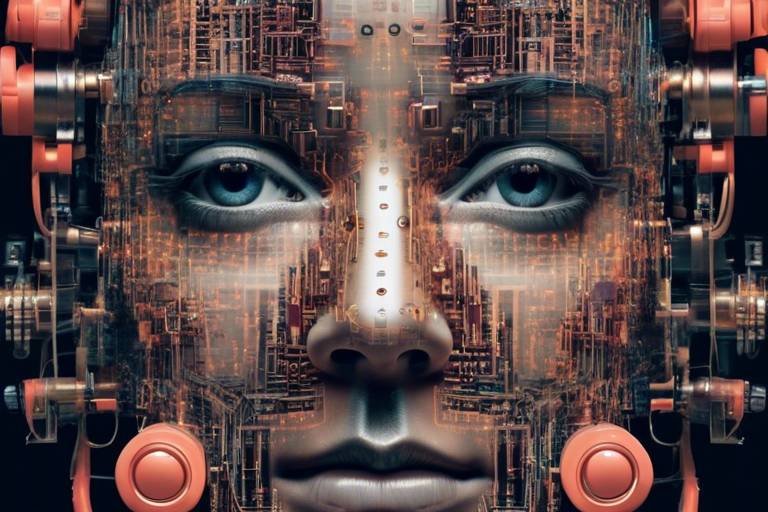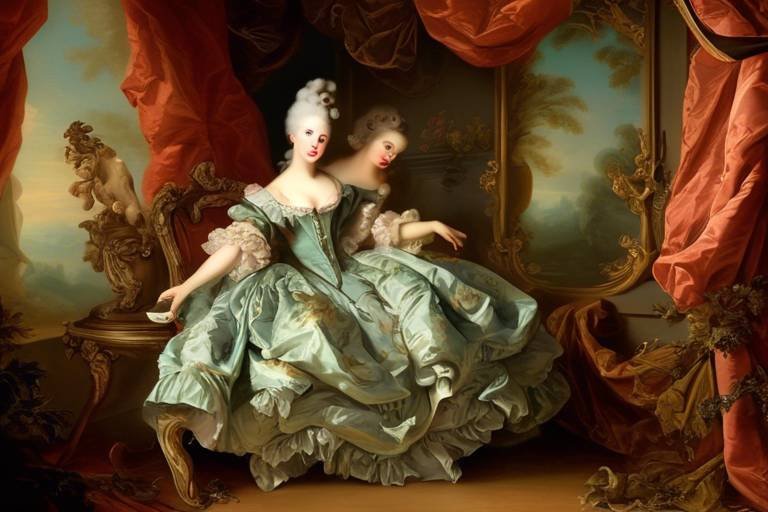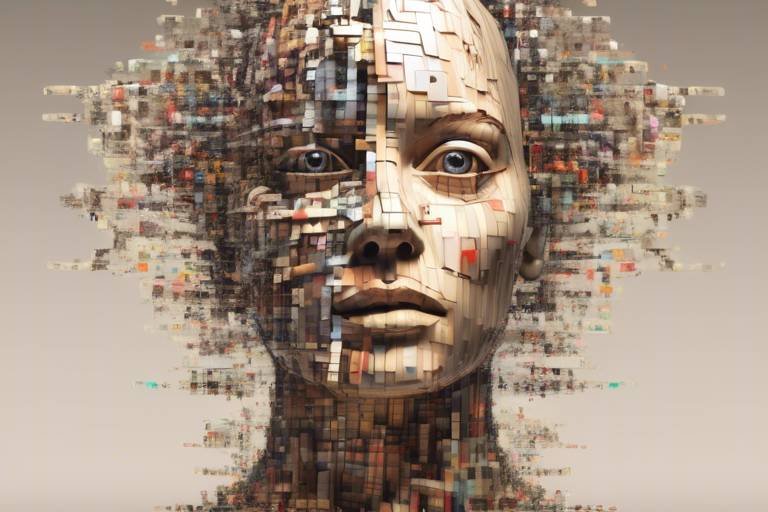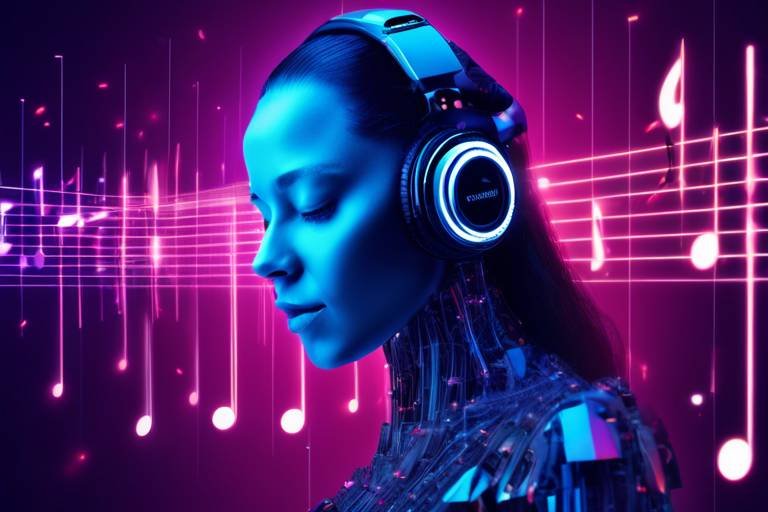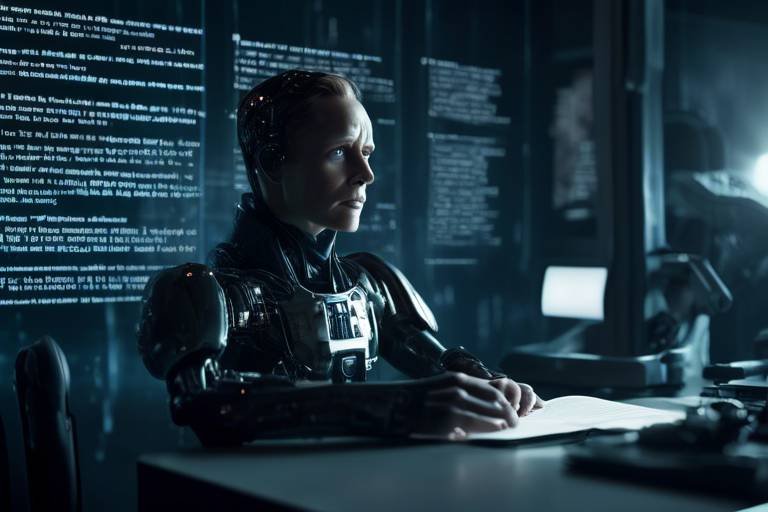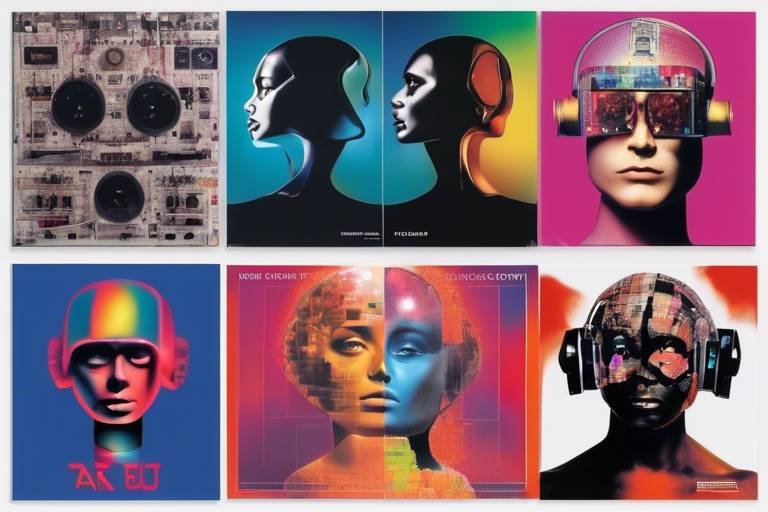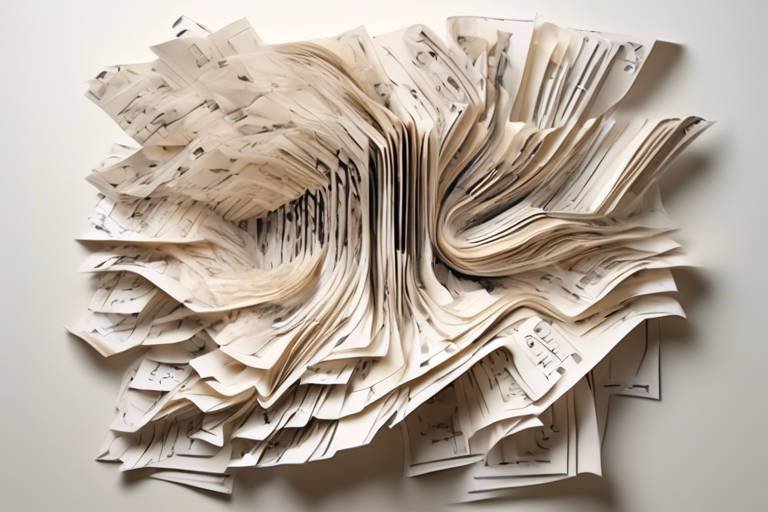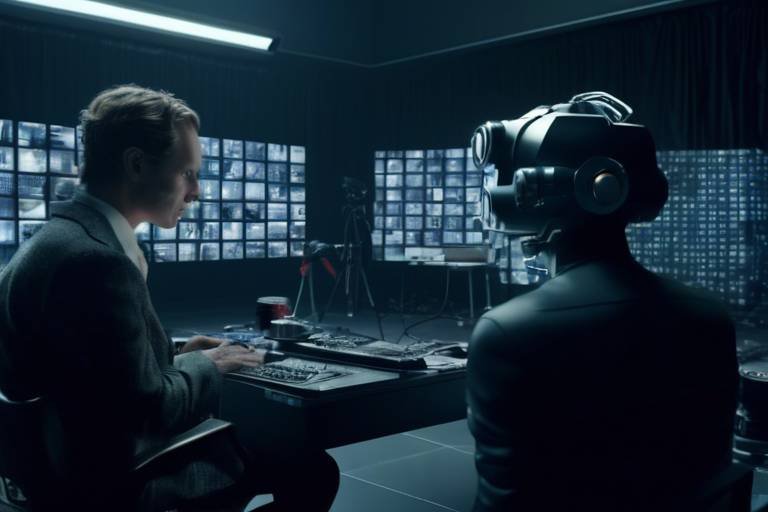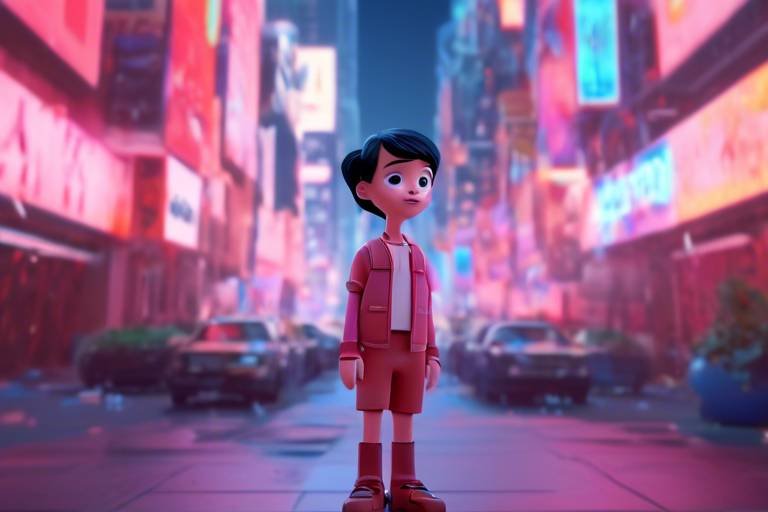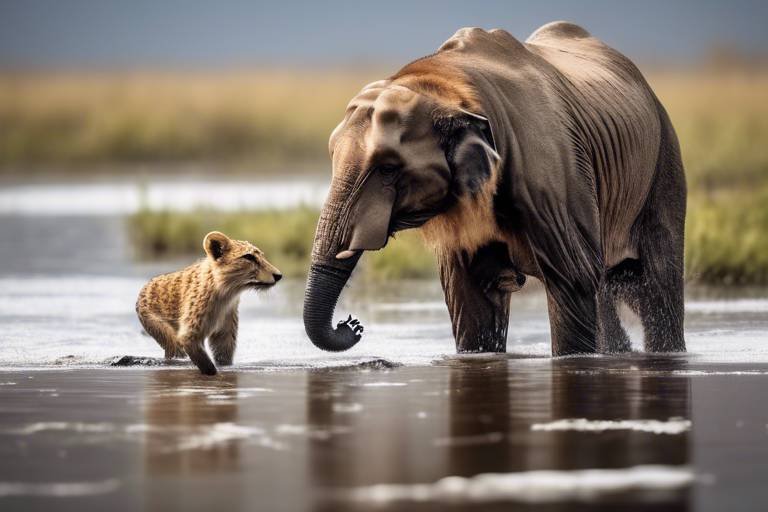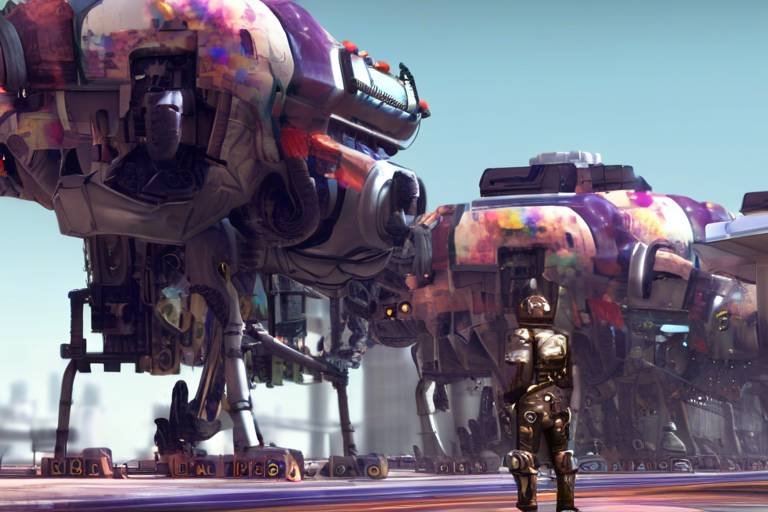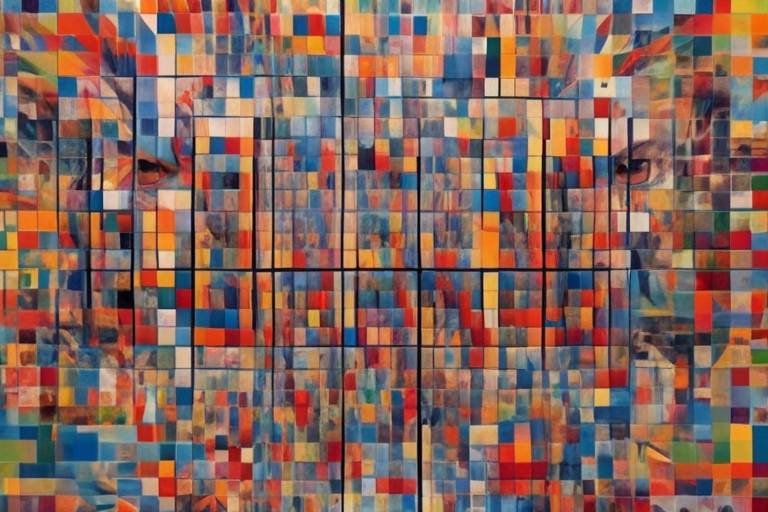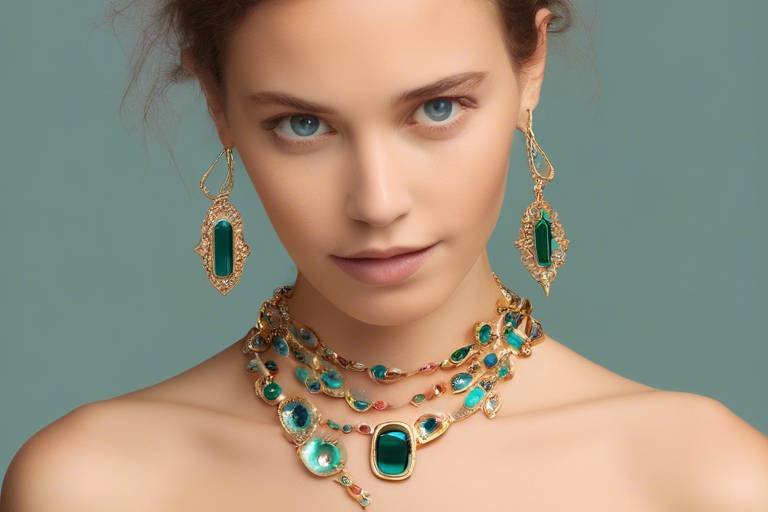Decoding AI's Effect on Creative Industries
The world of creativity is undergoing a seismic shift, and at the center of this transformation is artificial intelligence. Gone are the days when creativity was solely the domain of human imagination. Today, AI is stepping into the spotlight, reshaping how artists, designers, and content creators approach their craft. This article explores the transformative impact of artificial intelligence on various creative sectors, examining both the advantages and challenges it presents for artists, designers, and content creators.
Artificial intelligence is increasingly being integrated into creative industries, enhancing productivity and opening new avenues for innovation. Imagine a world where your creative partner can analyze thousands of art styles in seconds, suggesting unique combinations that you might never have considered. This is the reality today, as AI technologies evolve and become more sophisticated. From graphic design to film production, AI is becoming an essential tool, enabling creators to push boundaries and explore uncharted territories.
AI is not just a replacement for human creativity but rather a collaborator. Think of it as a skilled assistant that can help you brainstorm ideas, refine your work, or even generate entirely new concepts. Artists and designers are using AI to enhance their work in remarkable ways. For instance, AI algorithms can analyze trends, predict audience preferences, and suggest design elements that resonate with viewers. This collaboration allows human creators to focus on the emotional and conceptual aspects of their work while leaving the technical execution to AI.
Examining real-world examples reveals the unique outcomes and innovative projects that have emerged from partnerships between AI systems and human creators. One notable instance is the collaboration between the artist Refik Anadol and AI, where data-driven algorithms were used to create stunning visual installations that blend art and technology. Another example is the music industry, where AI tools like AIVA assist composers in generating original scores, pushing the limits of traditional music creation.
The intersection of visual arts and AI has led to groundbreaking works. Artists are now using AI to generate art that challenges traditional notions of creativity and authorship. For example, the AI-generated artwork titled "Edmond de Belamy," created by the Paris-based collective Obvious, sold for a staggering $432,500 at auction. This event sparked a heated debate about the nature of creativity and the role of the artist in the age of AI. Are these creations genuine art, or are they merely products of algorithms? The conversation is ongoing, but one thing is clear: AI is reshaping the landscape of visual arts.
AI's role in music composition is revolutionizing how songs are created. Musicians are now leveraging AI tools to compose, produce, and even perform music. For instance, platforms like Amper Music allow users to create custom soundtracks by simply selecting mood and style preferences. This not only democratizes music production but also opens doors for aspiring musicians who may lack formal training. The ability to collaborate with AI means that anyone with a vision can bring their musical ideas to life.
While AI offers exciting possibilities, it also raises important ethical questions. Artists face challenges regarding originality, copyright, and the potential for job displacement. As AI-generated works become more prevalent, the line between human and machine-created art blurs. Who owns the rights to an AI-generated piece? How do we ensure that human artists are not overshadowed by their digital counterparts? These questions are critical as we navigate the evolving creative landscape.
Looking ahead, the trajectory of AI in creative sectors is both promising and uncertain. Emerging trends and technologies will further transform the landscape of creativity. For instance, advancements in machine learning and generative design are likely to lead to even more sophisticated collaborations between humans and machines. The future may see AI not only assisting in the creative process but also becoming a co-creator in its own right.
This subsection examines cutting-edge technologies like machine learning and generative design, predicting how they will shape the future of creative work and collaboration between humans and machines. As these technologies continue to evolve, they will enable artists to explore new mediums and techniques, pushing the boundaries of what is possible in creative expression.
As AI continues to evolve, education must adapt. It is essential to prepare future creatives to understand and utilize AI tools effectively. Educational institutions should incorporate AI training into their curricula, ensuring that students are equipped with the skills needed to thrive in a world where technology and creativity intersect. By embracing AI, the next generation of artists and designers can unlock unprecedented potential in their work.
- How is AI changing the creative industries? AI enhances productivity, inspires new ideas, and assists in various creative processes, allowing artists to focus on their vision.
- Can AI create art? Yes, AI can generate art by analyzing data and applying algorithms, but the debate on authorship and creativity continues.
- What are the ethical concerns surrounding AI in creativity? Issues include copyright, originality, and the potential displacement of human artists.
- How can education adapt to the rise of AI in creative fields? Educational institutions should integrate AI training into their programs to prepare students for future challenges and opportunities.

The Rise of AI in Creative Fields
Artificial intelligence is not just a buzzword anymore; it’s a game-changer in the creative industries. Over the past few years, we've witnessed a significant transformation in how artists, designers, and content creators approach their work. From graphic design to music composition, AI technologies are enhancing productivity and opening new avenues for innovation. Imagine AI as your creative assistant, tirelessly working alongside you to brainstorm ideas, refine concepts, and even generate entire pieces of art. This collaborative partnership is reshaping the landscape of creativity.
The evolution of AI technologies has been nothing short of remarkable. Initially, AI was seen as a tool for data analysis and automation, but its capabilities have expanded into realms that require a touch of creativity. Today, we have machine learning algorithms that can analyze vast amounts of data, understand patterns, and even mimic human creativity. For instance, AI can now create stunning visual artworks, compose original music, and even write compelling stories. This blend of technology and creativity is not just enhancing artistic expression; it’s also pushing the boundaries of what we consider 'art' itself.
As we delve deeper into the integration of AI in creative fields, it’s essential to understand how these technologies are being adopted. Many artists are now using AI-driven tools to augment their creative processes. These tools can generate design options, suggest color palettes, or even create entire compositions based on the artist's input. The result? A more efficient workflow that allows creators to focus on the aspects of their work that require human intuition and emotional depth. For example, an illustrator might use AI to generate a variety of character designs, which they can then refine and personalize, blending technology with their unique artistic style.
Moreover, the rise of AI in creative fields has sparked a wave of excitement and curiosity among professionals and enthusiasts alike. It’s not just about replacing human creativity; it’s about enhancing it. Artists are beginning to embrace AI as a collaborator rather than a competitor. This shift in perspective is crucial as it opens up new possibilities for creative expression. The potential for innovation is vast, and we are only scratching the surface of what AI can do in the arts.
As we look to the future, the integration of AI in creative fields will likely continue to grow. With advancements in technology, we can expect even more sophisticated tools that will empower artists to explore uncharted territories of creativity. The question remains: how will we navigate this new landscape? Will we embrace AI as a partner in our creative journeys, or will we resist its influence? The answer will shape the future of creativity for generations to come.
- How is AI being used in creative industries? AI is used in various ways, including generating art, composing music, and assisting in design processes.
- Will AI replace human artists? No, AI is seen more as a collaborator than a replacement. It enhances human creativity rather than diminishes it.
- What are some examples of AI in art? AI-generated artworks, such as those created by algorithms like DeepArt and DALL-E, showcase how technology can produce unique visuals.
- How can artists benefit from AI tools? Artists can use AI to streamline their workflows, generate ideas, and explore new creative avenues.

AI as a Collaborative Tool
When you think about artificial intelligence, what comes to mind? For many, it's the idea of robots taking over jobs or machines replacing human creativity. But here's the twist: AI is not just a cold, calculating entity; it's becoming a collaborative partner for artists, designers, and content creators. Imagine having a teammate who never sleeps, can analyze vast amounts of data, and can offer creative suggestions at the drop of a hat. This partnership is not only enhancing productivity but also pushing the boundaries of what we consider creative expression.
Take a moment to picture a painter in their studio, surrounded by canvases and colors. Now, imagine that same painter using an AI tool that can analyze their previous works and suggest color palettes or even generate new compositions. This is exactly what AI is doing in the creative space—it's providing insights that may not have been considered before, allowing artists to explore uncharted territories in their work. By acting as a source of inspiration, AI is transforming the creative process into a more dynamic and interactive experience.
Moreover, AI tools are being designed to understand artistic styles and preferences, enabling a seamless integration into the creative workflow. For example, graphic designers can use AI-driven software to automate repetitive tasks such as resizing images, generating variations, or even creating layouts based on design principles. This not only saves time but also allows designers to focus on the more intricate aspects of their projects, like storytelling through visuals. The result? A more enriched creative output that combines human intuition with machine efficiency.
One of the most exciting aspects of AI as a collaborative tool is its ability to facilitate experimentation. Artists can push their creative boundaries by using AI to generate unexpected results. For instance, musicians can use AI algorithms to compose new melodies or harmonies that they might not have thought of on their own. This opens up a world of possibilities, allowing creators to explore new genres and styles while maintaining their unique voice.
However, it's essential to recognize that while AI can be a powerful ally, it should not overshadow the human touch. The creative spark that comes from personal experiences, emotions, and cultural contexts is irreplaceable. The key is to find a balance where AI enhances creativity without diluting the artist's original vision. This collaborative dynamic is what makes the relationship between AI and human creators so fascinating.
As we delve deeper into this collaboration, it's crucial to consider the tools available. Here’s a quick overview of some popular AI tools that are already being embraced by creative professionals:
| Tool Name | Functionality | Target Audience |
|---|---|---|
| DeepArt | Transforms photos into artwork using neural networks | Visual Artists |
| AIVA | Composes music using AI algorithms | Musicians |
| Runway ML | Offers tools for video editing and special effects | Filmmakers |
In conclusion, AI is proving to be much more than a mere tool; it's a catalyst for creativity. By working alongside human creators, AI is helping to unlock new potentials and redefine the creative process. This partnership is not about replacing the artist but enhancing their capabilities, allowing them to create works that are more profound and innovative than ever before. As we continue to embrace this technology, the future of creativity looks bright and full of endless possibilities.
- How can AI enhance creativity? AI can analyze data, suggest ideas, and automate repetitive tasks, allowing artists to focus on more complex creative processes.
- Are there any risks associated with using AI in creative work? Yes, there are concerns about originality, copyright, and the potential for job displacement.
- What types of AI tools are available for artists? There are various tools like DeepArt for visual arts, AIVA for music composition, and Runway ML for video editing.

Case Studies of Successful Collaborations
In recent years, the fusion of artificial intelligence and human creativity has led to some truly remarkable outcomes. These collaborations not only showcase the potential of AI but also highlight how it can enhance the creative process rather than replace it. Let's delve into a few fascinating case studies that illustrate this synergy.
One striking example comes from the world of visual arts. The artist Refik Anadol has gained acclaim for his stunning installations that merge AI with data visualization. His project, titled “Archive Dreaming,” uses machine learning algorithms to analyze vast amounts of data, transforming it into mesmerizing visual narratives. Anadol’s work challenges traditional notions of authorship, as the AI acts as a collaborator, generating unique visual experiences that would be impossible to create by human hands alone.
In the realm of music, the collaboration between OpenAI's MuseNet and contemporary musicians has sparked a revolution in how music is composed. MuseNet is capable of generating compositions in various styles, from classical to pop, by learning from a vast database of music. A notable instance of this is the collaboration with musician Taryn Southern, who used MuseNet to co-create her album “I AM AI.” The album features tracks that blend human emotion with AI-generated melodies, showcasing how technology can serve as a powerful tool for artistic expression.
Moreover, in the fashion industry, AI is making waves through collaborations that redefine design processes. The brand H&M partnered with AI design tools to analyze consumer trends and preferences, leading to the creation of collections that resonate more deeply with their audience. By utilizing AI to predict fashion trends, H&M has been able to streamline its design process, resulting in collections that are not only innovative but also commercially successful.
These case studies illustrate a broader trend where artists and creators are leveraging AI as a partner in their creative journeys. The outcomes are not just about efficiency; they also reflect a new kind of creativity that blends human intuition with machine learning capabilities. As we continue to explore these collaborations, we see that the potential for innovation is limited only by our imagination.
As we look to the future, the question remains: how will these collaborations evolve? Will they lead to entirely new forms of art and expression, or will they merely enhance what we already know? The answers lie in the ongoing experimentation and exploration at the intersection of technology and creativity.
- What is AI's role in creative industries?
AI acts as a collaborative tool, enhancing creativity by providing new insights, generating ideas, and automating repetitive tasks. - Can AI replace human artists?
No, AI is not meant to replace human creativity but to complement it, allowing artists to explore new avenues of expression. - Are there ethical concerns with AI in creative fields?
Yes, issues such as copyright, originality, and potential job displacement are important considerations that need to be addressed.

Visual Arts and AI
The fusion of visual arts and artificial intelligence is nothing short of a revolution. Imagine standing in front of a painting that was not crafted by a human hand, but generated by a complex algorithm. This phenomenon is not just a futuristic concept; it is happening right now, challenging our perceptions of creativity and authorship. Artists are increasingly embracing AI as a tool to push the boundaries of their creativity, leading to innovative works that blend human intuition with machine precision.
AI's ability to analyze vast amounts of data enables it to generate artwork that can mimic styles from various art movements, from Impressionism to Surrealism. For instance, programs like DeepArt and Artbreeder allow users to create unique pieces by combining different artistic styles or even by transforming photographs into stunning artworks. This process raises intriguing questions: If an AI can create art, who owns that art? Is it the programmer, the user, or the machine itself? These questions are at the heart of the ongoing debate about originality and authorship in the age of technology.
Moreover, AI-generated art is not just limited to static images. It extends into the realm of interactive installations and digital experiences that engage viewers in ways traditional art cannot. For example, artists like Refik Anadol are using AI to create immersive environments that respond to audience interactions, blending the lines between observer and participant. This evolution in visual arts is akin to how the invention of photography transformed painting in the 19th century; it opens up new avenues for expression and challenges artists to rethink their roles.
While the potential for AI in visual arts is exciting, it is crucial to address the ethical implications. The art world is grappling with issues of copyright infringement, as AI systems often learn from existing artworks. This raises concerns about whether these systems are merely remixing existing styles or genuinely creating something new. As we navigate this uncharted territory, it is essential for artists, technologists, and policymakers to collaborate and establish guidelines that protect creativity while fostering innovation.
In conclusion, the intersection of visual arts and AI is a dynamic landscape filled with possibilities. As artists continue to explore this collaboration, we can expect to see a new wave of creativity that challenges our understanding of art itself. The question remains: Will AI become a mere tool, or will it evolve into a co-creator in the artistic process? Only time will tell, but one thing is certain: the dialogue between human creativity and artificial intelligence is just beginning.
- Can AI create original art? Yes, AI can generate unique artworks by analyzing existing styles and creating new combinations, but the question of originality is still debated.
- Who owns AI-generated art? Ownership can be complex and often depends on the agreements between the programmer, the user, and the AI's creators.
- Is AI a threat to human artists? While AI can automate certain tasks, many artists view it as a collaborative tool that can enhance their creativity rather than replace them.
- What are the ethical concerns with AI in art? Issues include copyright infringement, the potential for job displacement, and the need for guidelines on artists' rights regarding AI-generated works.

Music Composition with AI
Imagine sitting at your piano, fingers hovering over the keys, and suddenly a wave of inspiration washes over you. Now, picture a digital assistant sitting beside you, ready to help compose the next big hit. This is the exciting reality of AI in music composition. Today, artificial intelligence is revolutionizing the way we create music, offering tools that not only assist musicians but also inspire them to explore new creative avenues.
AI-driven tools are becoming indispensable in the music industry. They can analyze vast amounts of data, from popular song structures to trending melodies, providing musicians with insights that were previously unavailable. For instance, platforms like AIVA and Amper Music allow artists to generate original compositions by simply inputting a few parameters, such as mood, genre, and tempo. This means that even if you're not a trained musician, you can still create something that sounds professional!
But how exactly does this technology work? At its core, AI uses machine learning algorithms to study existing music and learn patterns. By analyzing thousands of songs, AI can identify what makes a piece of music appealing and replicate those elements. This process is akin to having a mentor who has listened to every song ever made, guiding you to create something that resonates with audiences.
Moreover, AI tools can assist in various stages of the music-making process, from composition to production. For example, AI can help in:
- Generating melodies: By providing a base melody, AI can suggest variations that fit well within the musical context.
- Arranging tracks: AI can recommend instrumentations and arrangements based on the genre and style of the song.
- Mixing and mastering: AI-driven software can analyze the mix and suggest adjustments to enhance the overall sound quality.
One of the most fascinating aspects of AI in music composition is its ability to collaborate with human artists. This collaboration can lead to unexpected and innovative results. For instance, a musician might start with an AI-generated melody and then add their personal touch, creating a unique blend of human emotion and machine precision. This partnership challenges traditional notions of authorship and creativity, raising questions about what it means to be an artist in the age of technology.
However, as with any technological advancement, there are challenges and ethical considerations to navigate. Questions about copyright arise when AI creates music that sounds similar to existing works. Who owns the rights to a song composed by an AI? Is it the programmer, the user, or the AI itself? These are complex issues that the industry must address as AI continues to evolve.
In conclusion, AI is not just a tool for music composition; it’s a partner that opens new doors for creativity. As musicians embrace these technologies, we can expect to see a wave of innovation in the music industry that blends human artistry with the precision of artificial intelligence. The future of music composition is indeed bright, and it's a thrilling time to be a part of this evolving landscape!
- Can AI compose music on its own? Yes, AI can generate music independently, but it often works best when collaborating with human musicians.
- Are AI-generated songs copyrightable? This is a gray area in law; currently, copyright laws vary by country, and discussions are ongoing.
- What are some popular AI music composition tools? Some notable tools include AIVA, Amper Music, and OpenAI's MuseNet.

Challenges and Ethical Considerations
The rise of artificial intelligence in creative industries has undoubtedly brought about a wave of innovation and efficiency. However, with great power comes great responsibility, and the integration of AI into creative processes raises a plethora of ethical dilemmas and challenges that cannot be ignored. One of the most pressing issues is the question of originality. When an AI generates a piece of art or composes a song, who is the true creator? Is it the programmer who wrote the code, the artist who provided the initial input, or the AI itself? This ambiguity can lead to disputes over copyright and ownership, leaving artists in a precarious position.
Moreover, as AI becomes more capable of producing high-quality creative work, there is a growing concern about job displacement. Many fear that artists, designers, and musicians might find themselves replaced by machines that can churn out content faster and cheaper. While AI is intended to augment human creativity rather than replace it, the reality is that the landscape of creative professions is shifting. This evolution prompts a need for professionals to adapt and learn new skills to stay relevant in an AI-enhanced world.
Another significant challenge involves the potential for bias in AI-generated content. AI systems learn from existing data, and if that data contains biases, the outputs will reflect those same biases. This can lead to the perpetuation of stereotypes and the exclusion of diverse voices in creative fields. For instance, if an AI is trained predominantly on Western art, it may struggle to create works that accurately represent or respect non-Western cultures. This raises important questions about diversity and inclusivity in the creative process.
Additionally, the transparency of AI algorithms is a crucial consideration. Artists and consumers alike deserve to understand how AI systems make decisions and generate content. Without transparency, it becomes difficult to trust the outputs of these systems, leading to skepticism about the authenticity and integrity of AI-generated works. To foster a healthy relationship between technology and creativity, it’s essential for developers to prioritize ethical guidelines and ensure that their algorithms are understandable and fair.
In light of these challenges, it’s imperative for the creative community to engage in ongoing discussions about the role of AI in their fields. By fostering a collaborative environment where artists, technologists, and ethicists can come together, we can navigate the complexities of AI integration while preserving the essence of human creativity. The future of creativity may very well depend on our ability to balance innovation with ethical considerations, ensuring that technology serves as a tool for enhancement rather than a source of conflict.
- What are the main ethical concerns regarding AI in creative industries?
The primary concerns include issues of originality, copyright, job displacement, bias in AI outputs, and the transparency of AI algorithms. - Can AI replace human creativity?
While AI can assist and enhance creative processes, it is not a replacement for human creativity. It is more of a collaborator that can help push creative boundaries. - How can artists protect their work in an AI-driven landscape?
Artists can protect their work by understanding copyright laws and advocating for fair use policies that consider AI-generated content. - What role does education play in integrating AI into creative fields?
Education is crucial for teaching future creatives about AI tools and ethical considerations, helping them adapt to the evolving landscape.

The Future of AI in Creative Industries
The future of artificial intelligence (AI) in creative industries is as thrilling as it is unpredictable. As we stand on the brink of a technological revolution, the integration of AI into artistic fields is set to redefine what creativity means. Imagine a world where artists, designers, and musicians collaborate with intelligent machines to create works that push the boundaries of human imagination. It's not just a dream; it's happening right now!
One of the most exciting aspects of AI's future in creative industries is its potential to enhance collaboration. Rather than replacing human creativity, AI serves as a partner, offering tools that help artists expand their vision. For instance, AI can analyze vast datasets of existing artwork, music, or design elements, identifying patterns and suggesting innovative ideas that artists might not have considered. This capability can lead to a fusion of styles, genres, and techniques, resulting in a rich tapestry of creative expression.
Moreover, as AI technology continues to evolve, we can expect to see emerging trends that will further shape the landscape of creativity. One such trend is the rise of generative design. This approach uses algorithms to generate a multitude of design options based on specific parameters set by the user. Think of it as having a brainstorming buddy that can whip up a hundred variations of your idea in seconds! Designers can then sift through these options, selecting the most compelling ones to refine and develop into final products.
But what does this mean for the future workforce? As AI tools become more prevalent, the role of education in the creative sector must adapt. Educational institutions will need to equip future creatives with the skills to navigate this new landscape. This includes understanding how to use AI tools effectively, as well as developing a critical eye for evaluating AI-generated content. Just as artists learned to use traditional tools like paintbrushes and software like Photoshop, they will also need to master AI technologies to stay relevant.
As we look toward the horizon, it's clear that the intersection of AI and creativity will give rise to new forms of artistic expression. Imagine virtual reality experiences co-created with AI, where users can interact with art in ways previously thought impossible. Or consider how AI could assist in composing symphonies that blend human emotion with computational precision, creating music that resonates on a whole new level.
However, with great power comes great responsibility. The future of AI in creative industries also raises important ethical questions that need to be addressed. Issues of authorship, originality, and copyright will become increasingly complex as AI-generated works proliferate. Artists and creators will need to navigate these challenges carefully, ensuring that their rights are protected while embracing the opportunities that AI offers.
| Emerging Trends | Impact on Creativity |
|---|---|
| Generative Design | Allows for rapid prototyping and exploration of ideas. |
| AI-Assisted Composition | Enhances musical creativity and expands compositional possibilities. |
| Interactive AI Art | Creates immersive experiences that engage audiences in new ways. |
In conclusion, the future of AI in creative industries is bright and full of potential. As technology continues to advance, it will unlock new possibilities for artists, designers, and musicians alike. While we embrace these changes, it's crucial to remain vigilant about the ethical implications and ensure that human creativity remains at the forefront of this exciting journey.
- Will AI replace human artists? No, AI is more likely to serve as a collaborative tool that enhances human creativity rather than replacing it.
- What skills will future creatives need? Future creatives will need to master AI tools, understand data analysis, and maintain a critical perspective on AI-generated content.
- How can AI impact the music industry? AI can assist musicians in composing, producing, and even performing music, leading to innovative soundscapes and compositions.
- What are the ethical concerns surrounding AI in creativity? Concerns include issues of authorship, originality, and copyright as AI-generated works become more prevalent.

Emerging Technologies and Trends
As we stand on the brink of a new era in the creative industries, the emergence of cutting-edge technologies is reshaping how artists, designers, and content creators approach their work. These technologies are not just gimmicks; they are powerful tools that enhance creativity and push the boundaries of what is possible. From machine learning algorithms to generative design systems, the landscape of creativity is evolving at a breakneck pace.
One of the most significant trends is the rise of machine learning, which allows computers to analyze vast amounts of data and generate insights that were previously unimaginable. For instance, artists can now use machine learning to analyze patterns in their own work or that of others, leading to new styles and techniques that blend human creativity with computational power. Imagine a painter who can input their previous works into a system that suggests color palettes and brush strokes based on historical art movements. This collaboration between human and machine is not just a fantasy; it's happening right now.
Another exciting trend is generative design, which utilizes algorithms to create a multitude of design options based on specific parameters set by the user. This technology is particularly popular in architecture and product design, where it can produce innovative solutions that a human designer might never consider. For example, an architect could input criteria such as materials, space requirements, and environmental factors, and the generative design software would output numerous architectural possibilities, each one unique and optimized for the given constraints. This not only saves time but also inspires creativity by presenting designers with options they may not have thought of on their own.
Moreover, the integration of virtual reality (VR) and augmented reality (AR) into creative processes is creating immersive experiences that allow artists to visualize their work in new dimensions. Imagine walking through a gallery where the art comes to life around you, or using AR to see how a piece of furniture would look in your living room before making a purchase. These technologies are not only enhancing the way we experience art but also expanding the creative possibilities for artists themselves.
In addition to these advancements, the collaboration between AI and human creators is fostering a new wave of creativity. Artists are increasingly using AI-driven tools to assist in everything from music composition to graphic design. For instance, AI can analyze trends in music and suggest chord progressions or melodies that resonate with current audiences. This collaborative approach allows artists to focus on their unique vision while leveraging AI's analytical capabilities to refine and enhance their work.
However, as with any technological advancement, there are challenges that come with these emerging trends. The rapid pace of innovation can create a steep learning curve for artists who may not be familiar with these technologies. Additionally, there are concerns about the potential for homogenization in creative work, as reliance on AI tools could lead to a lack of originality. It's crucial for artists to find a balance between utilizing these tools and maintaining their unique voice.
As we look to the future, it is clear that the integration of these emerging technologies will continue to shape the creative landscape. Artists and designers who embrace these tools will not only enhance their own work but also contribute to a richer, more diverse creative ecosystem. The collaboration between human creativity and artificial intelligence is not the end of artistry; rather, it is a new beginning that promises to unlock endless possibilities.
- What is generative design? Generative design is a technology that uses algorithms to generate a wide range of design options based on specific input parameters set by the user.
- How does machine learning enhance creativity? Machine learning analyzes large datasets to provide insights and suggestions that can inspire new styles, techniques, and creative directions for artists.
- What role do VR and AR play in the creative industries? VR and AR create immersive experiences that allow artists to visualize their work in new ways and enhance how audiences interact with art.
- Are there risks associated with using AI in creative processes? Yes, there are concerns about originality and the potential for homogenization in creative work, but finding a balance between AI tools and human creativity can mitigate these risks.

The Role of Education in AI Integration
As we embrace the rapid evolution of artificial intelligence, it's crucial to recognize that education must keep pace with these changes. The integration of AI into creative industries is not just a fleeting trend; it's a transformative movement that reshapes how we think about creativity and innovation. But how can educational institutions prepare future creators for this brave new world? The answer lies in a multifaceted approach that combines technical skills with creative thinking.
First and foremost, curriculum development is key. Schools and universities need to incorporate AI-related subjects into their programs. This includes not only the technical aspects of AI, such as programming and machine learning, but also the ethical implications of using AI in creative processes. For instance, students should learn about the importance of originality and copyright issues that arise when AI is involved in art creation. By doing so, they will be better equipped to navigate the complexities of the industry.
Moreover, hands-on experience is invaluable. Educational institutions should offer workshops and collaborative projects where students can work directly with AI tools. Imagine a scenario where aspiring artists collaborate with AI to create stunning visual pieces or musicians experiment with AI-generated melodies. This not only enhances their technical skills but also encourages them to explore new creative avenues. A practical approach fosters an environment where students can innovate and think outside the box.
Additionally, interdisciplinary learning is essential. The fusion of technology and creativity can lead to groundbreaking innovations, and students should be encouraged to explore fields outside their primary focus. For example, a graphic designer could benefit from understanding programming languages, while a musician might find inspiration in visual arts. By breaking down the silos between disciplines, we can cultivate a new generation of creators who are versatile and adaptive.
Furthermore, mentorship plays a pivotal role in education. Connecting students with industry professionals who are already utilizing AI in their work can provide invaluable insights. Mentors can share their experiences, challenges, and successes, offering students a realistic view of what to expect in the creative landscape. This type of guidance can be instrumental in shaping their career paths and helping them make informed decisions about their futures.
Finally, we must not forget the importance of fostering a culture of lifelong learning. The field of AI is constantly evolving, and so too must the skills of those who work within it. Educational institutions should encourage students to continue their education beyond formal schooling—whether through online courses, workshops, or industry conferences. This ongoing commitment to learning will ensure that creatives remain at the forefront of innovation in their respective fields.
In summary, the role of education in AI integration is multifaceted and critical. By developing a robust curriculum, providing hands-on experiences, promoting interdisciplinary learning, facilitating mentorship opportunities, and fostering a culture of lifelong learning, we can prepare future creatives to thrive in an AI-enhanced world. The possibilities are endless, and with the right education, tomorrow's artists, designers, and content creators can harness the power of AI to push the boundaries of creativity.
- How can I start learning about AI in creative fields?
There are many online courses and workshops available that focus on AI applications in art, music, and design. Look for programs that offer hands-on experience with AI tools. - What ethical considerations should I keep in mind when using AI in my work?
It's important to understand issues related to copyright, originality, and the implications of AI-generated content. Familiarize yourself with current laws and best practices in your field. - Can AI replace human creativity?
AI is best viewed as a collaborative tool rather than a replacement. It can enhance human creativity but cannot replicate the unique perspectives and emotions that artists bring to their work.
Frequently Asked Questions
- How is AI transforming creative industries?
AI is revolutionizing creative industries by enhancing productivity and enabling new forms of innovation. It acts as a collaborative tool, allowing artists and designers to push their creative boundaries and explore new possibilities that were previously unimaginable.
- Can AI replace human creativity?
No, AI is not here to replace human creativity. Instead, it serves as a collaborator. Artists and designers are using AI to complement their skills, leading to unique outcomes that blend human intuition with machine efficiency.
- What are some examples of successful AI collaborations in the arts?
There are numerous case studies showcasing successful collaborations between AI and human creators. For instance, artists have used AI algorithms to generate unique pieces of art, while musicians utilize AI tools to compose and produce music, resulting in innovative and captivating works.
- What ethical challenges does AI pose in creative fields?
AI raises several ethical concerns, including issues of originality and copyright. Artists may struggle with the question of authorship when AI contributes significantly to a piece of work, and there are fears about potential job displacement in creative roles.
- What does the future hold for AI in creative industries?
The future of AI in creative sectors looks promising, with emerging technologies like machine learning and generative design set to further transform the landscape. As these technologies evolve, they will likely lead to even more innovative collaborations between humans and machines.
- How important is education in integrating AI into creative fields?
Education plays a crucial role in integrating AI into creative disciplines. It's essential for future creatives to understand AI tools and their applications, ensuring they are equipped to harness these technologies effectively in their work.

